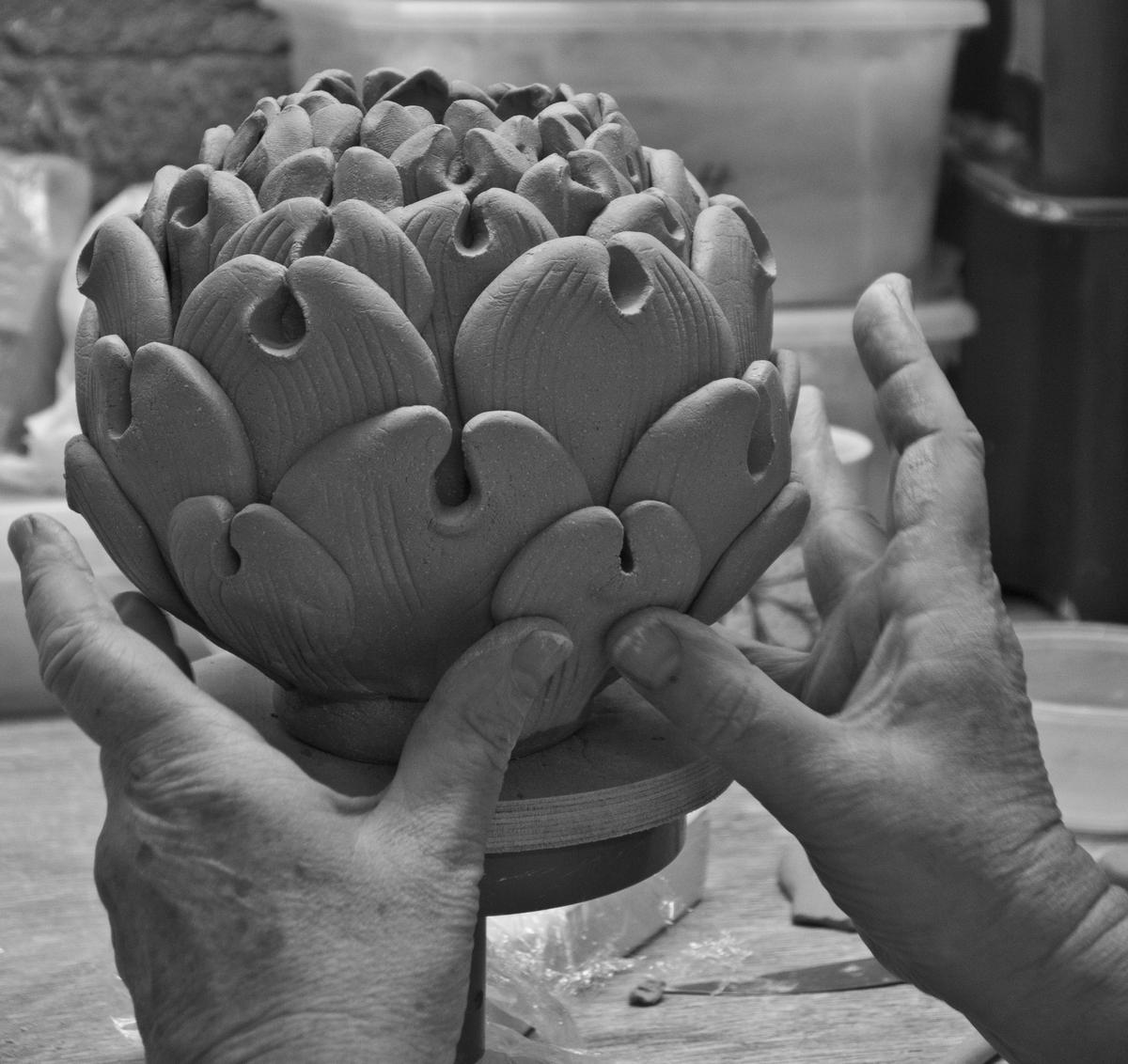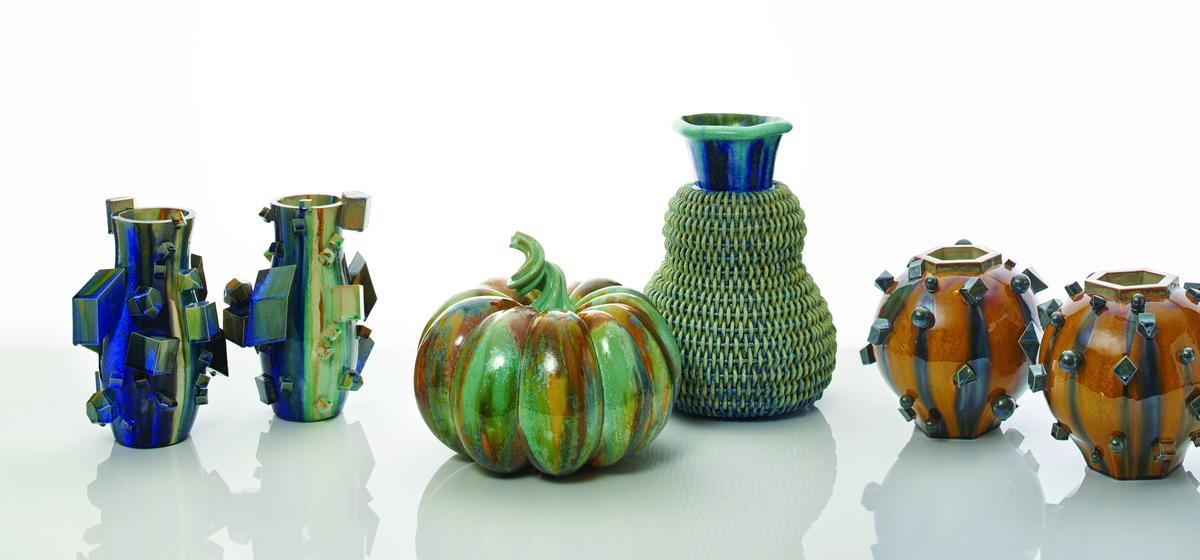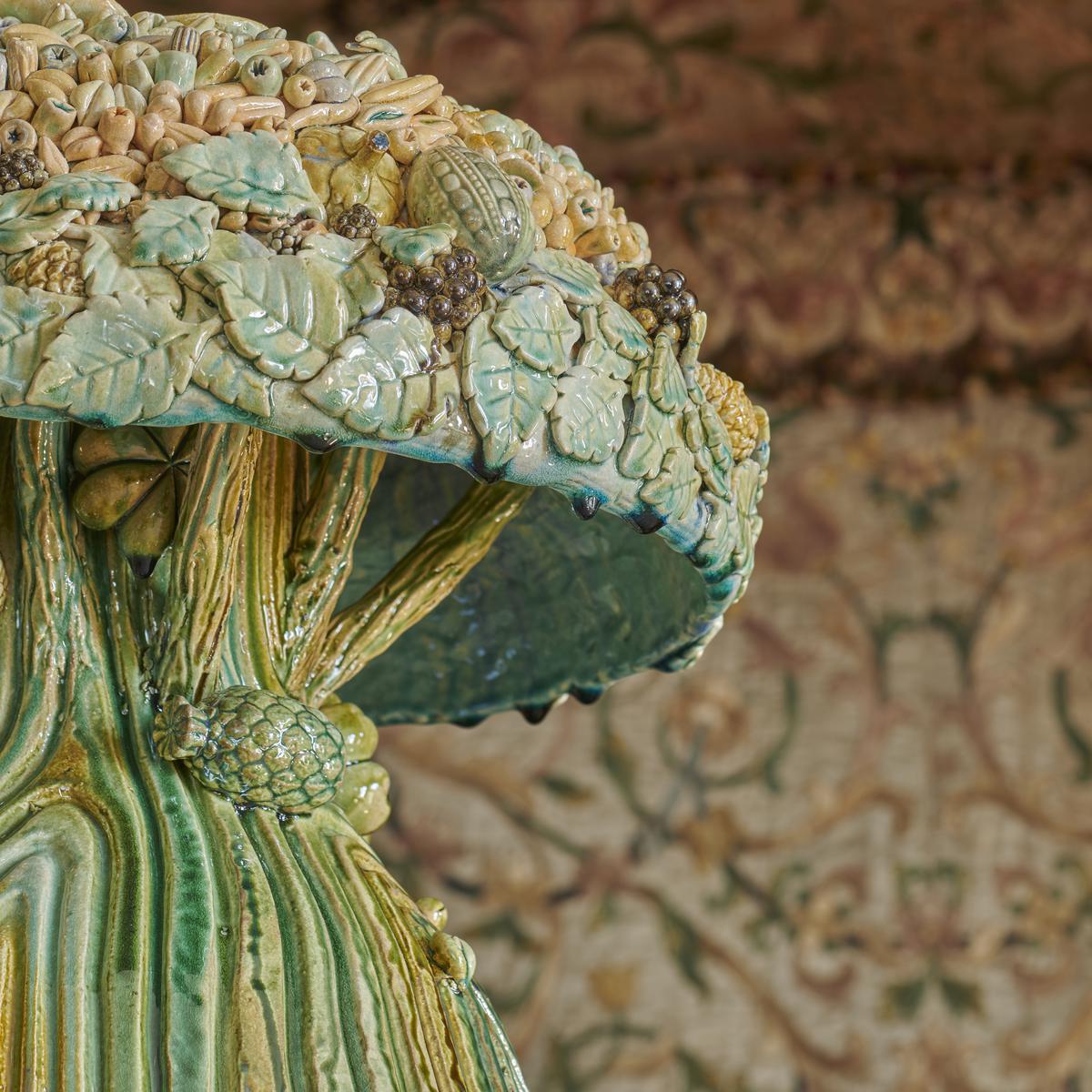Kate Malone in her London studio | Photo Credit: Dan Fontanelli
The year was 1986. Kate Malone, a 24-year-old British potter at the time, had come to India with her husband in Ahmedabad to visit their friends – visual artist Ravindra Reddy, and sculptors Trupti Patel and Dhruv Mistry, with whom she had a close friendship. His time at the Royal College of London.
The trip to India was also to get a glimpse of the country’s rich pottery tradition. A wish that was leading them to Goa with blue lonely planet as their guide and whispering about a ferry that would take them to Panjim. “I remember a giant Parle-G billboard and this porter in a red shirt who held our luggage. We jumped onto the deck of the ferry, and with chickens and goats and people huddled around us, it was truly the most memorable experience. And it was a rough time,” she recalls.
It was a sharp contrast to his 2018 first porcelain triennial trip to India. “It was a fascinating experience,” she says, adding that it was the year Indian pottery had an aha moment because it was the first time that the art community was able to expand clay to something more than pottery, to sculpture. As it had gone away.

Malone sculpting an artichoke

Malone’s selection of works

The Singing Ringing Tree (2021)
artist’s wisdom
“If you look at the history of studio pottery in England, Bernard Leach, in the early 1950s [the father of British pottery] Went to Japan and came back with Shoji Hamada and started Studio Pottery 70 years ago, which has grown over the years,” she says. “In India, studio pottery is relatively new and confined to the past few decades, which means you have a whole future ahead of you here. So, in the Indian pottery studio, the intelligence of the artist and the spirituality of India’s history are a cocktail waiting to explode.
Pottery students at Clay Fingers in Thrissur, Kerala
, Photo Credit: Aaji Archives/Mohammed A.
Malone is conducting a workshop at Clay Fingers
, Photo credit: Suresh Subramanian
The way she sees it, people need to be more aware of the intelligence of studio potters in India. She hopes the pandemic has made people more concerned about collectibles and the vital importance of ceramics that go beyond functionality. Of all the potters working today, Malone is most influenced by artist Madhavi Subramanian’s environmentally sensitive, vivid imagination and quirky approach to challenging the possibilities of clay.
physical memory
Since the 1980s, Malone has been to India nearly 30 times. While she doesn’t claim to be an expert in the development of studio pottery in India, she is pleasantly surprised at the accessibility of the materials now.
When the studio Clay Fingers from Thrissur, Kerala, approached her a few months ago to do a workshop on glazing, Malone initially declined, believing they might not have access to the materials needed. In his understanding, India did not really have a history of glazing as it has a history of terracotta and burnt clay. But he changed his mind after they arranged everything they needed.
Kate Malone in Clay Fingers
, Photo credit: Suresh Subramanian
with the students at Clay Fingers
, Photo credit: Suresh Subramanian
Clay Fingers Workshop
, Photo Credit: Aaji Archives/Mohammed A.
“They managed to get such obscure materials needed for the glazing and the students took buses and flew in from all parts of India,” she says. “So, while demand and supply are important in terms of the materials needed, you have examples like Supplier Clay Station in Bengaluru that has helped spawn over 50 studio potters in the last eight years. These studios then also served as pottery schools.